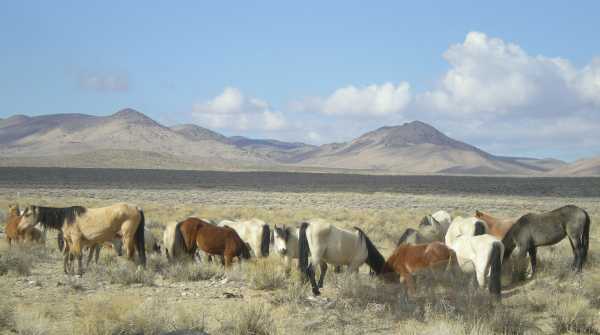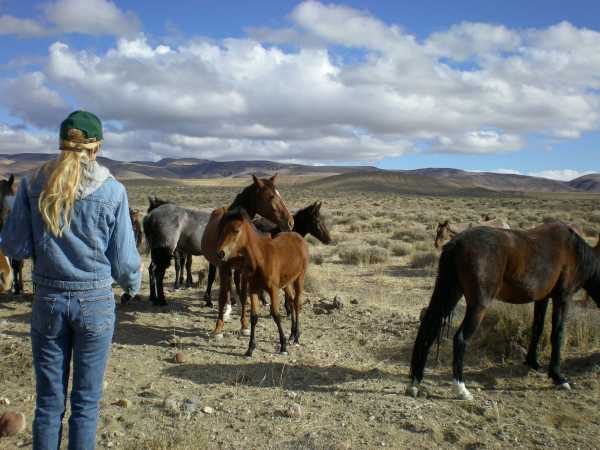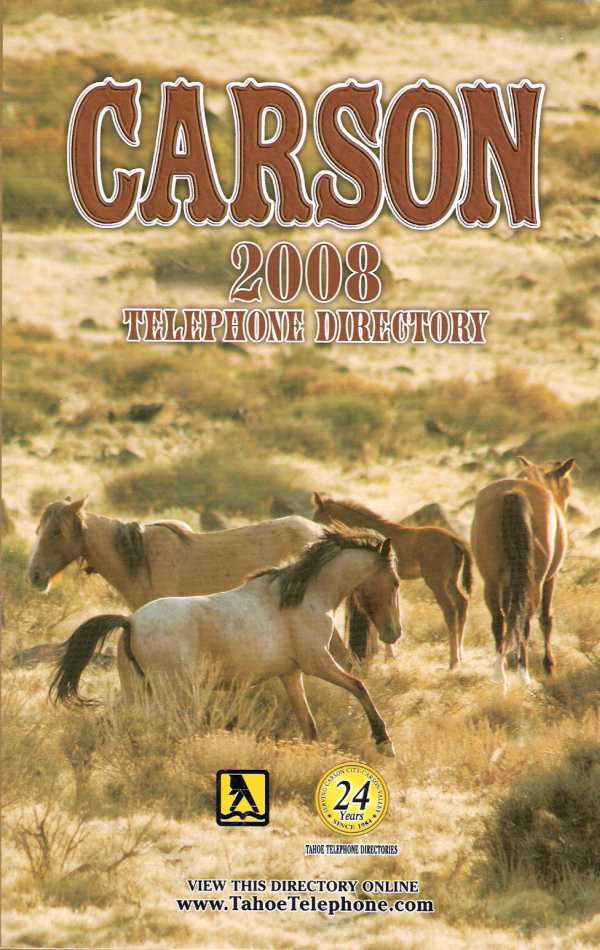Back home on the Range
|
|
NEVADA WILD HORSES RETURNED TO THE RANGE
Part Two
|
Even though Nevada is a large state geographically, the horse community is pretty small.
In December, 2007 word was circulating that the Department of Agriculture was seeking to turn horses over to whatever landowner whose land the horses ranged, to unload the horses held in the state corrals at area livestock auctions and/or to sell the horses outright. Of course there was little interest. The profit margin to be gained in dealing Virginia Range horses wasn't worth the maelstrom of public anger that such a venture would whip up.
Meanwhile, for several years the field active wild horse groups and TRI had entertained the concept of a multi-faceted supervised horse habitat project utilizing TRI's open space. While TRI and the horse groups were in agreement on the concept, the Department of Agriculture showed little interest. One of the issues the groups wanted to study involved the long term effects of an equine imunocontraceptive known as GnRH being used by the state. Volunteers from Least Resistance Training Concepts (LRTC) were observing some GNRH bands in neighboring Lyon County and were encouraged by what they saw, however a formal "platform" was needed to establish the risks and benefits of GnRH in a more scientifically credible study. The participation of wild horse volunteers would also help alleviate any concerns that the results might be skewed in favor of the drug manufacturer or agencies that wanted to use the drug to help contain horse management costs.
Group leaders emphasized that birth control was not intended to be the project's only management tool, but that giving some mares a rest from producing foals for a couple of years would give the Project Team a chance to study all the environmental and biological issues, try to get the ecology back in balance and objectively determine what long term role birth control should have in the greater scheme of things.
One of the GnRH bands being monitored by volunteers.

LRTC, the Virginia Range Wildlife Protection Association, Lifesavers Wild Horse Rescue and Wild Horses in Need drafted a comprehensive proposal that would facilitate proactive stewardship over TRI's wild horse range and the Virginia Range horses. Such a plan required the involvement of the Nevada Department of Agriculture. The Department's administration initially declined to participate.
"We basically had to drag the administration to the table," explained LRTC President Willis Lamm. "Once we got their attention and the Director recognized the intrinsic benefits, they came on board. We may have closed the books on a rather sordid history involving the Virginia Range horses and now embark on a modern, humane, proactive and less costly approach to preserving these horses in a rapidly changing region."
Developer Lance Gilman was quick to point out that this was not just another management scheme. "I don't like the term 'management.'" It implies meddling with things. We want to develop a habitat where horses and other wildlife remain compatible with our industrial center but we'll let nature still be the primary influence here."
The center has preserved a diverse population of wildlife including a local resident cougar and her cub.
Wild horse activist Craig Downer is the project's consulting wildlife ecologist. While he acknowledges that some birth control and selective removals will be a component of the project, he points out that range restoration and reclaiming ecological balances would provide the most desirable and most sustainable long term benefits for the horses and other wildlife.
As the Project Team describes it, "We eventually want to play a minimalist role on the range. We want to discover what influences we can apply that maximize the range's ability to be self sustaining. This isn't going to be some kind of wild horse theme park. We want to create conditions that could be replicated on any of a number of wild horse ranges. We need to address erosion, overgrazing, declining water supplies and other resource issues, then we want to see how successfully the horses self-regulate when they and other wildlife can make more effective use of available range acreage."
Volunteers inspecting horses in Silver Springs.

Installing a water tank to allow horses better access to range forage.

How Nevadans feel about their wild horses. (The capitol city's phone book.)


| 



